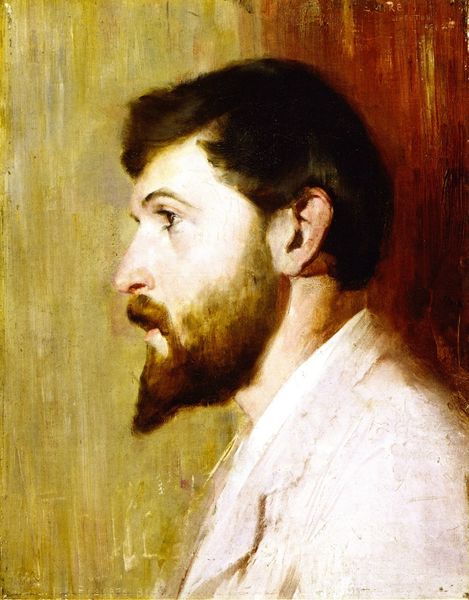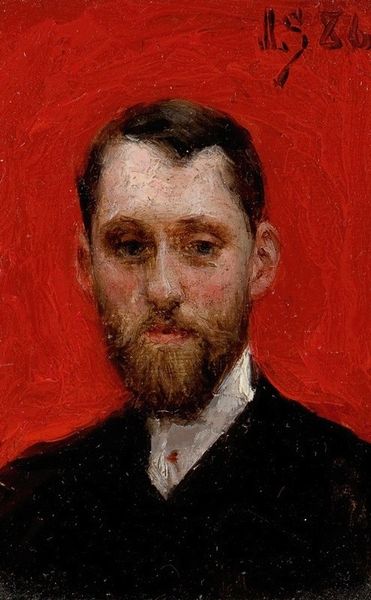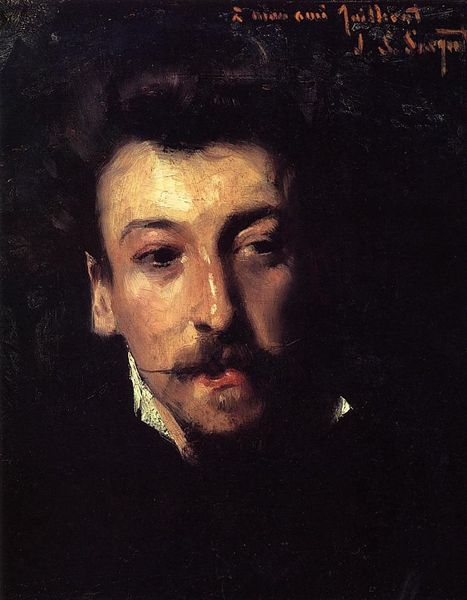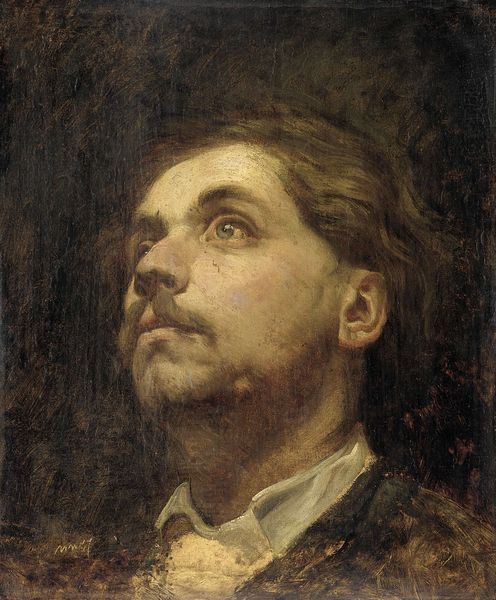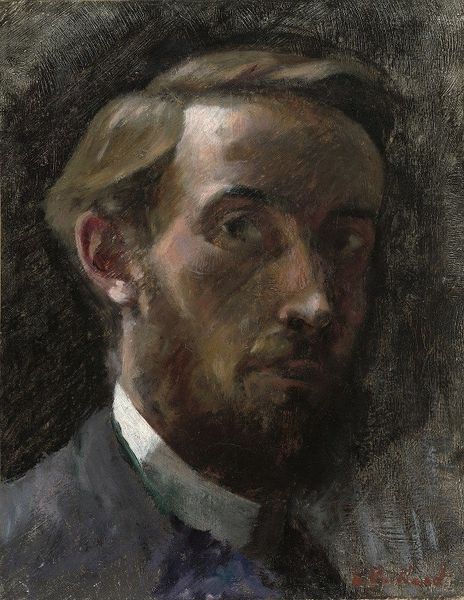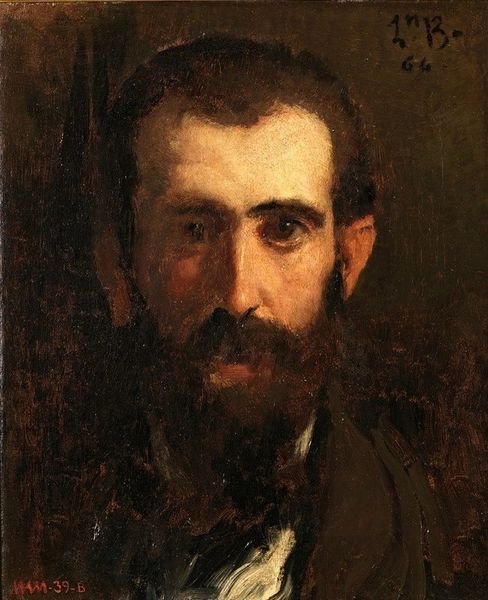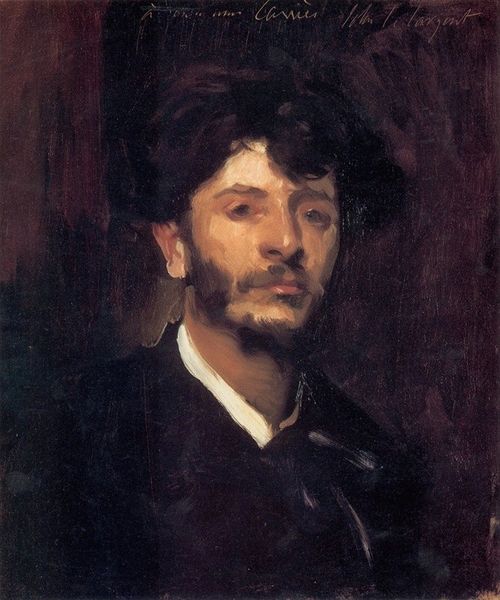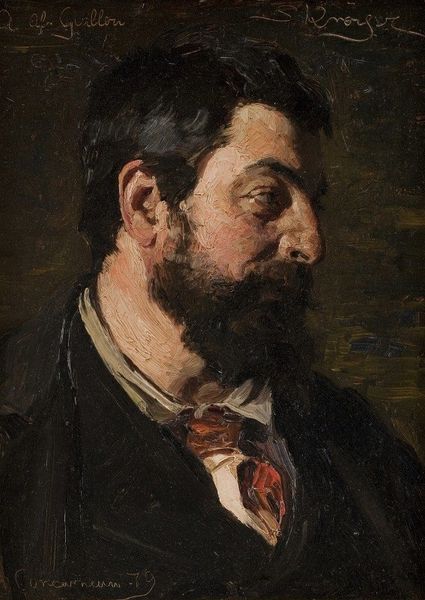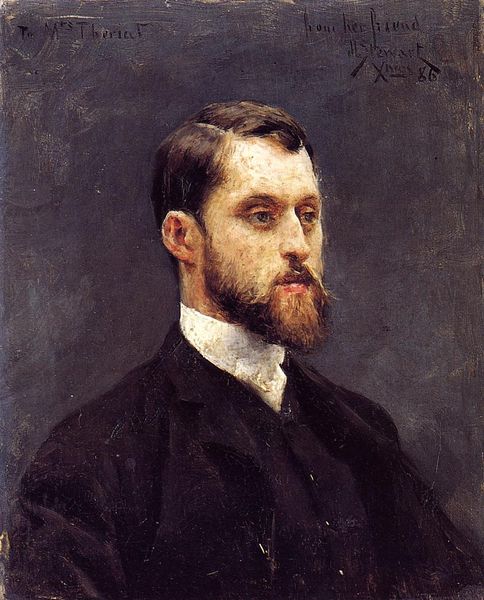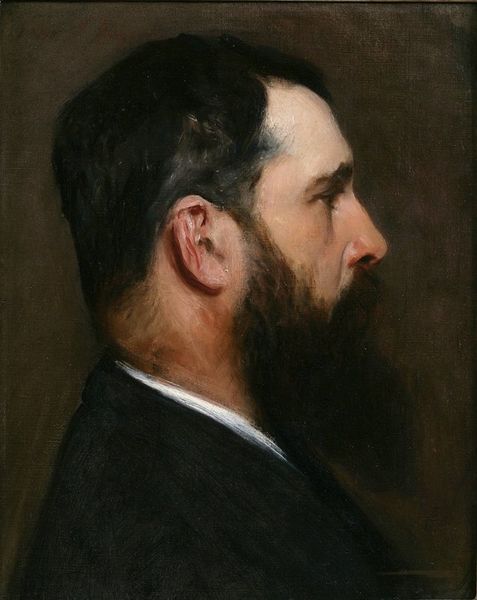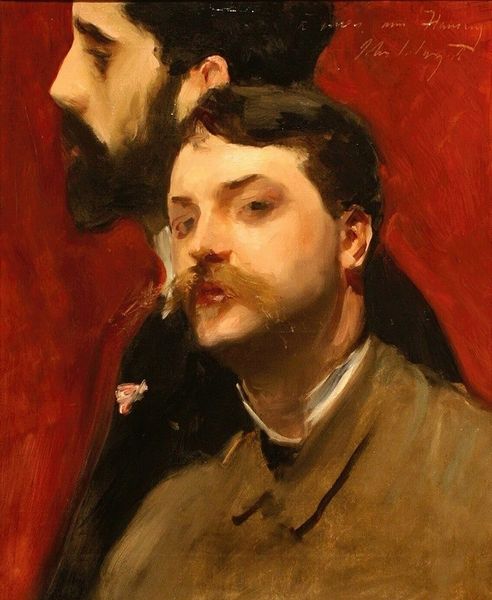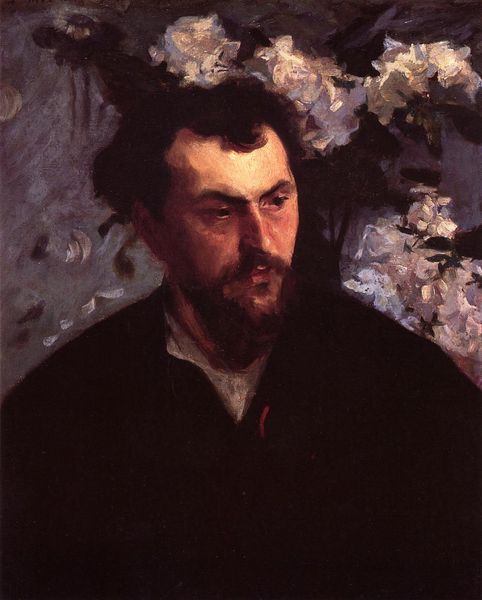
Copyright: Public Domain: Artvee
Editor: Here we have Léon François Comerre's "Autoportrait" from 1881. There's a directness to his gaze that's quite compelling. What historical context do you think is relevant for understanding this work? Curator: Well, think about the era. In the late 19th century, Paris was *the* art capital. Academies held tremendous sway, and portraiture, especially self-portraiture, became a way for artists to assert their place within the artistic landscape, to showcase their skills. Do you notice anything about his clothing or bearing? Editor: He's dressed formally, but there’s something a little… undone about it. Is that significant? Curator: Precisely! This carefully constructed image presents Comerre as a serious artist but also hints at a romantic sensibility, breaking slightly from rigid academic traditions, yet still very much engaged in it. Artists like Comerre walked a tightrope, needing the patronage and validation of the Salon while simultaneously wanting to express their individual artistic vision. Editor: So, the self-portrait becomes a negotiation between societal expectations and personal ambition? Curator: Absolutely! Consider the socio-political backdrop. France had recently gone through major upheaval, shifting political systems and societal values. Art became a tool for self-definition and social positioning. And in museums like this, portraits became public declarations. Editor: It's fascinating to consider how much an image can convey about the artist's place in society at that time. Curator: Exactly. Now, how does seeing the piece within this context change your initial perception of it? Editor: It makes me realize that it is not merely a representation, but a statement about identity within the academic artistic community. Thanks! Curator: My pleasure! Considering that every artistic choice involves negotiations of social forces allows a new lens for artwork analysis.
Comments
No comments
Be the first to comment and join the conversation on the ultimate creative platform.
